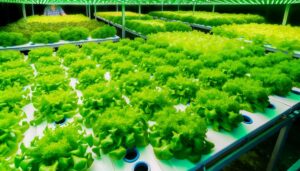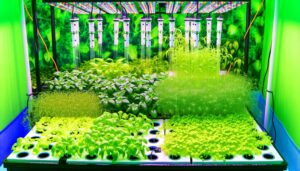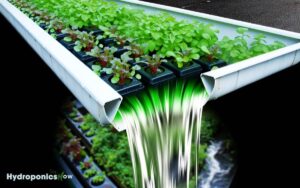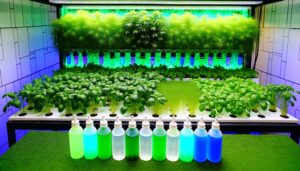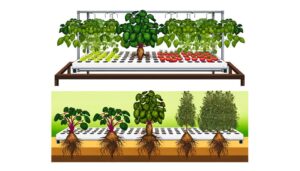Do Water Gel Beads Work for Holding Plants in Hydroponics?
You can use water gel beads in hydroponics for their excellent water retention and efficient nutrient delivery.
Composed of cross-linked hydrophilic polymers, they expand greatly when hydrated and help maintain stable pH levels.
However, these beads lack structural support for larger plants and can lead to root rot due to excessive moisture retention. They may also degrade over time, releasing harmful substances and becoming breeding grounds for algae and bacteria.
Compared to other mediums like rockwool, perlite, and coco coir, gel beads excel in water retention but pose significant challenges. To explore these points in depth, continue onward.
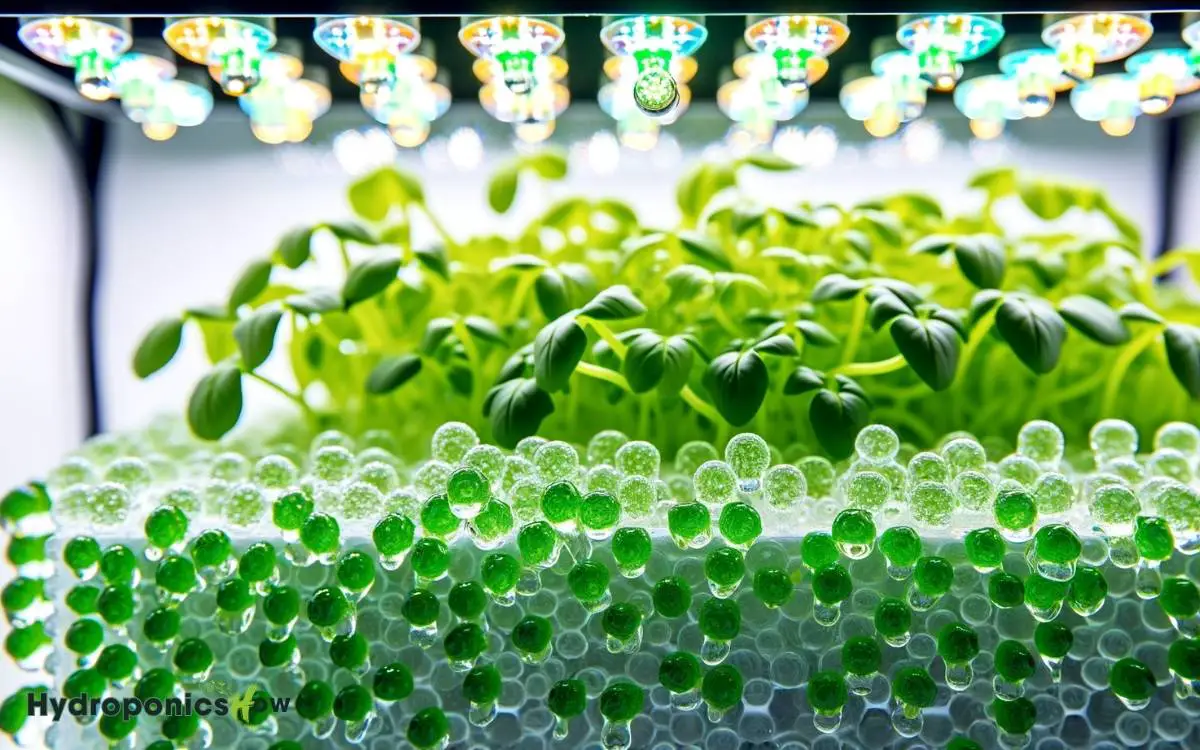
Key Takeaways
Understanding Water Gel Beads
Water gel beads, also known as hydrogel beads, are polymer-based materials that can absorb and retain large amounts of water, making them highly effective for hydroponic systems.
These beads are composed of cross-linked hydrophilic polymers, which form a three-dimensional network capable of holding water molecules.
When hydrated, they expand greatly, creating a moist environment conducive to root growth. You’ll find that their high water retention capacity guarantees a consistent moisture supply, essential for ideal plant health.
The beads’ structure allows for efficient nutrient uptake, as they swell and release water gradually.
Additionally, their inert nature means they don’t interact chemically with nutrients, maintaining a stable pH level. Understanding these properties is essential for leveraging hydrogels in hydroponic applications.
Benefits in Hydroponics
You’ll find that hydrogel beads offer several essential advantages in hydroponic systems, including enhanced water retention, efficient nutrient delivery, and stable pH maintenance.
These beads can absorb and store significant amounts of water, reducing the frequency of irrigation. By retaining moisture, they provide a consistent water supply to plant roots, optimizing growth conditions.
The porous structure of hydrogel beads allows for the gradual release of nutrients, ensuring plants receive a steady nutrient flow.
Additionally, the beads contribute to maintaining a vital pH level in the hydroponic solution, which is important for nutrient uptake and overall plant health.
Their inert nature means they won’t react with the nutrient solution, providing a controlled environment for plant development.
Potential Drawbacks
However, despite their numerous benefits, hydrogel beads can present several challenges in hydroponic applications.
To begin with, their water retention capacity can become a detriment in cases of over-hydration, leading to root rot and decreased oxygen availability.
They also lack the structural support that more rigid media provide, potentially causing instability in larger plants. Additionally, hydrogels can degrade over time, releasing potentially harmful substances into the nutrient solution.
Managing pH levels can also be problematic, as hydrogels don’t buffer pH as effectively as other media. Lastly, they can become breeding grounds for algae and bacteria if not properly maintained.
As a result, while hydrogel beads offer unique advantages, understanding these limitations is essential for successful hydroponic cultivation.
Comparing to Other Mediums
Given these limitations, it’s important to compare hydrogel beads with other hydroponic media such as rockwool, perlite, and coco coir to determine the most suitable option for specific growing conditions.
Rockwool offers superior water retention and air porosity but poses challenges in disposal due to its non-biodegradable nature.
Perlite, known for its excellent drainage and aeration, may require frequent watering due to its low water retention capacity.
Coco coir strikes a balance, providing good water retention and aeration while being environmentally friendly.
In contrast, hydrogel beads excel in water retention but can suffocate roots if oversaturated.
Each medium has unique advantages and drawbacks, necessitating a tailored approach depending on the specific hydroponic setup and plant requirements.
Expert Opinions and Studies
Several scientific studies and expert reviews have investigated the efficacy of hydrogel beads in hydroponic systems, providing valuable insights into their performance and potential applications.
Researchers have found that hydrogel beads exhibit excellent water retention properties, which can enhance root hydration and nutrient absorption.
However, some studies indicate that the beads’ limited structural support may not be ideal for larger plants.
Experts highlight that while hydrogels can reduce water usage and improve plant growth rates, they often require supplementation with other substrates like perlite or vermiculite for best root stability.
Additionally, concerns about hydrogel biodegradability and potential chemical leaching have been raised, necessitating further long-term studies to fully understand their environmental impact and efficacy in diverse hydroponic setups.
Conclusion
So, you’re thinking water gel beads are the magic beans for hydroponics? Think again.
While they might look like a fun science experiment, their water retention is about as reliable as a sieve. Sure, they’re shiny and techy, but your plants need more than a pretty face. Stick to tried-and-true mediums like rockwool or clay pebbles.
Trust us, your plants (and your sanity) will thank you. Hydroponics isn’t a game of marbles, after all. With the right system in place, you’ll enjoy healthier plants, faster growth, and bigger yields—all without the mess of soil. If you’re just starting out, exploring hydroponic garlic for beginners can be a great way to learn the basics while growing a useful and flavorful crop. Before you know it, you’ll be harvesting fresh produce with confidence and ease!


